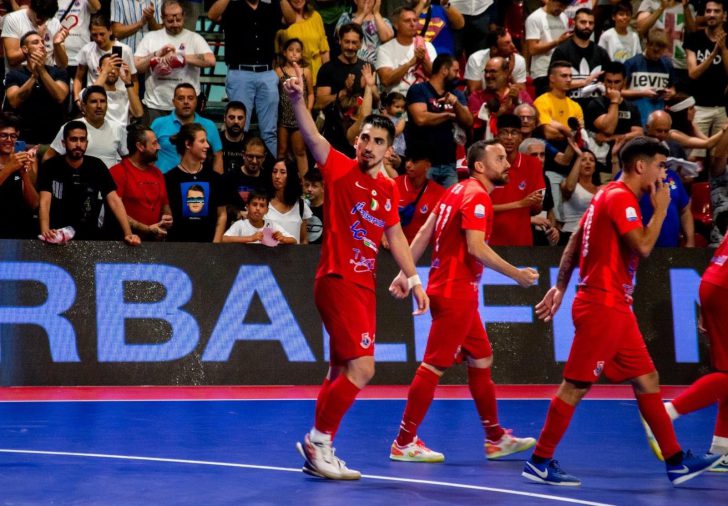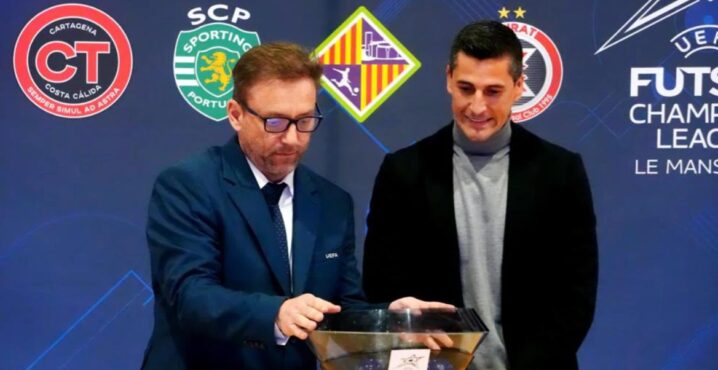Estimated reading time:4 minutes, 48 seconds
The Italian 2022/23 Futsal season was rocked when the Futsal Division of the Italian Football Federation (FIGC) decided to limit the number of foreign futsal players in the league.
The purpose of the Futsal Division’s controversial decision was made to grow the grassroots, youth, player development of domestic players by limiting the number of foreign players who require a visa to play, and on players with Italian citizenship but were born in different countries.
How does the new rule work?
The Division introduced the concept of “Giocatore Formato” (Trained Player). A player is considered “formato” when he/she was registered with an Italian club before they were 18 years old and played for a specified number of years in the league in either Futsal or Football:
- In the official matches of the Championship and the Italian Cup, the Serie A clubs will have to present a list of 12 players. In the same matches, the Serie A clubs must include at least eight trained players in the match list.
- In the official matches of the Championship and the Italian Cup, the Serie A2 clubs are obliged to include at least nine trained players in the match list, of which at least two were born after 01/01/2004.
- In the official matches of the Championship and the Italian Cup, the Serie B clubs are obliged to include at least ten trained players in the match list, of which at least two who are born after 01/01/2004.
For the 2022/2023 season, the participation limits for the women’s national championships remain unchanged (Serie A with six players trained, Serie A2 with 7).
In the 2023/2024 season, the number of players trained will increase across all the leagues.
What are the numbers that pushed the Division to make a sudden change?
- In Serie A, 80% of the players are not “formati” and only 20% are locally developed in Italy since a young age.
- Of the 20% of the players developed in Italy, 0% are under 20, 4% are under 25, 8% are 25 to 30 and 8% are over 30.
- 19 clubs have won the 37 championships, but only 3 clubs of the 19 still exist.
It’s not unknown that the Italian national team relied heavily on foreign players with double citizenship, especially from South America. However, this has now become standard practice in many national teams apart from the top ones, such as Spain, Brazil, Portugal, and Argentina, who have done a great job developing players from a young age.
Most clubs are unhappy, given the little time to organise themselves for the season. The common complaint is that Italy will see a steep decline in the quality of the national leagues, and some of them have been forced to rebuild their team altogether.
Another dark side of the story is that many players have moved to Italy with families for a decade, they live and breathe the Italian culture, and their children have only lived in Italy since they were born. Those same players have now seen their careers at stake.
The Division is aware that this will be a long-term solution and that planting the seed to pick the fruits in 10-15 years might be a good strategy.
The men’s and women’s national teams already utilise more than 50% of players fully developed in Italy. Although some fans are upset about the latest results, this is a complete rebuild that will take time to show why these changes have been made for the good of the sport.
In 2022/2023 Futsal Champions League, Italian Champions Italservice Pesaro decided to withdraw from the competition due to this new rule. Italservice Pesaro’s president publicly said that due to this decision, the team was not competitive enough to play at the highest level in Europe.
Feldi Eboli C5, were the runners-up in the last playoffs, so they took Pesaro’s spot and have had a successful campaign so far. The difference between the two teams was that some of Eboli’s players are considered “formati” because they played official matches in Italy before turning 18 years old and therefore, the new regulations did not impact their team as much as it did for Pesaro which instead was relying on international players such as Taborda, Cuzzolino, Borruto, just to name a few. However, the problems are deeper than this. Some feel that foreign players have been a political scapegoat rather than the problem itself. The lack of platforms and programs to develop players from a very young age is in everyone’s eyes, starting with clubs not investing in their junior academies and academies are not built in a day.
There is an issue with venues due to a lack of investment from the local governments and regions, which makes it hard for clubs to build their membership base and development platforms.
In Europe, Portugal and Spain have been great examples of countries being able to develop local talent in Futsal. The blueprint is there for everyone to study
Perhaps we will see a brand new Italy in the next 10 years, and only time will tell if this was the silver bullet everyone was looking for.
Main picture: LND Divisione Calcio a 5 – Facebook Page
Futsal Focus
You can read more articles about domestic futsal by going to the top navigation bar or by clicking here
If you like this article and would like to keep updated on Futsal news, developments, etc then you can now follow Futsal Focus via Google News by following our page which will send you an alert as soon as we publish an article so please click here and follow us on Google.
You can also keep updated on Futsal news, developments, etc then please submit your email below in the Subscribe to Futsal Focus option.
Follow Futsal Focus by clicking on Facebook, Twitter, or Instagram or on the social media buttons on the website.


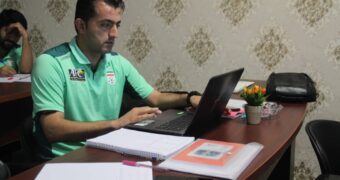




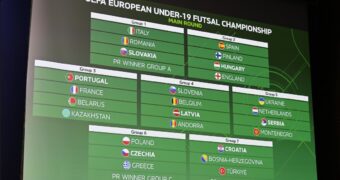

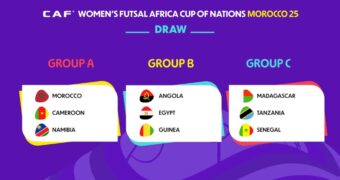






![Validate my RSS feed [Valid RSS]](https://www.futsalfocus.net/wp-content/uploads/2020/01/valid-rss-rogers.png)

